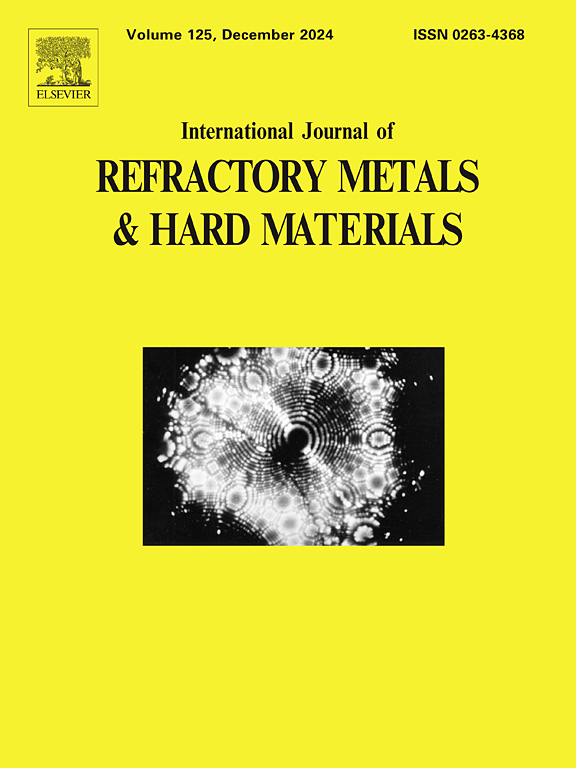Wear mechanisms and its effect of CBN tool on surface roughness in machining of metallic glass
IF 4.2
2区 材料科学
Q2 MATERIALS SCIENCE, MULTIDISCIPLINARY
International Journal of Refractory Metals & Hard Materials
Pub Date : 2025-02-01
DOI:10.1016/j.ijrmhm.2025.107082
引用次数: 0
Abstract
Metallic glass is widely used owing to its excellent properties such as high strength, high hardness, and high elastic limit. Due to its challenging machining characteristics, analyzing tool wear during the machining process is of great significance for broader application. This paper presents an experimental study on the wear behavior and performance characteristics of CBN tools with a negative chamfering structure when cutting Vit1 under different cutting conditions. The analysis explored the impact of cutting parameters on the tool wear process. It shows that the cutting parameters affected the tool-wear stages. Under high cutting parameters, the tool bypasses the normal wear stage and transitions directly to the rapid wear phase. The rake face exhibits cratering and fine chipping, whereas the flank face displays normal wear bands and groove wear. The wear mechanisms of the CBN tools when cutting Vit1 include abrasive, diffusion, oxidation, and adhesive wear. These types of wear are caused by several mechanisms. The machined surface roughness is influenced not only by the increased tool wear but also by the surface quality of the wear zone on the flank face and chip adhesion.
加工金属玻璃时 CBN 工具的磨损机理及其对表面粗糙度的影响
金属玻璃因其具有高强度、高硬度、高弹性极限等优异性能而得到广泛应用。由于其具有挑战性的加工特性,分析刀具在加工过程中的磨损对于更广泛的应用具有重要意义。本文对负倒角结构CBN刀具在不同切削条件下切削Vit1时的磨损行为和性能特征进行了实验研究。分析了切削参数对刀具磨损过程的影响。结果表明,切削参数对刀具磨损阶段有影响。在高切削参数下,刀具绕过正常磨损阶段,直接过渡到快速磨损阶段。前端面呈凹坑状和细屑状,后端面呈正常磨损带和槽状磨损。CBN刀具切削Vit1时的磨损机制包括磨料磨损、扩散磨损、氧化磨损和粘着磨损。这些类型的磨损是由几种机制引起的。加工表面粗糙度不仅受刀具磨损增加的影响,还受侧面磨损区表面质量和切屑附着的影响。
本文章由计算机程序翻译,如有差异,请以英文原文为准。
求助全文
约1分钟内获得全文
求助全文
来源期刊
CiteScore
7.00
自引率
13.90%
发文量
236
审稿时长
35 days
期刊介绍:
The International Journal of Refractory Metals and Hard Materials (IJRMHM) publishes original research articles concerned with all aspects of refractory metals and hard materials. Refractory metals are defined as metals with melting points higher than 1800 °C. These are tungsten, molybdenum, chromium, tantalum, niobium, hafnium, and rhenium, as well as many compounds and alloys based thereupon. Hard materials that are included in the scope of this journal are defined as materials with hardness values higher than 1000 kg/mm2, primarily intended for applications as manufacturing tools or wear resistant components in mechanical systems. Thus they encompass carbides, nitrides and borides of metals, and related compounds. A special focus of this journal is put on the family of hardmetals, which is also known as cemented tungsten carbide, and cermets which are based on titanium carbide and carbonitrides with or without a metal binder. Ceramics and superhard materials including diamond and cubic boron nitride may also be accepted provided the subject material is presented as hard materials as defined above.

 求助内容:
求助内容: 应助结果提醒方式:
应助结果提醒方式:


